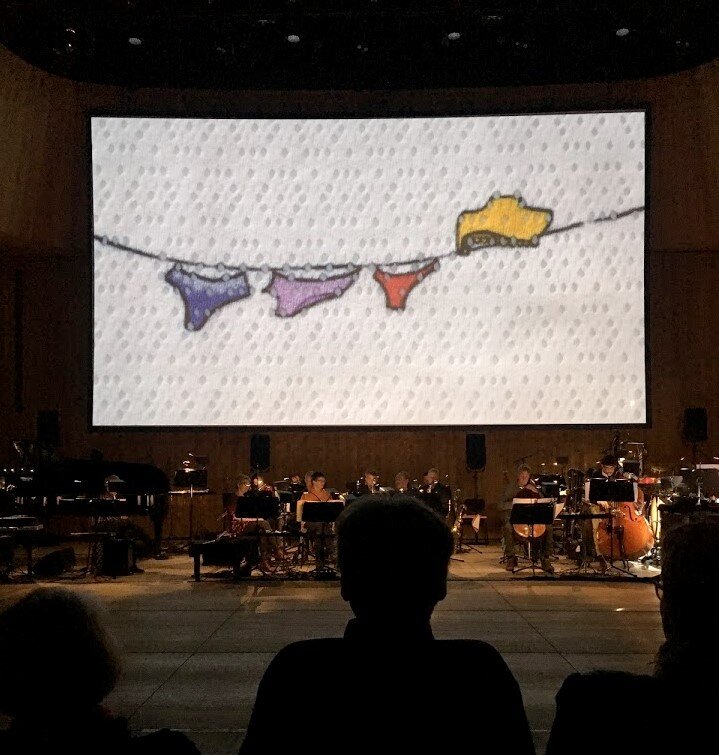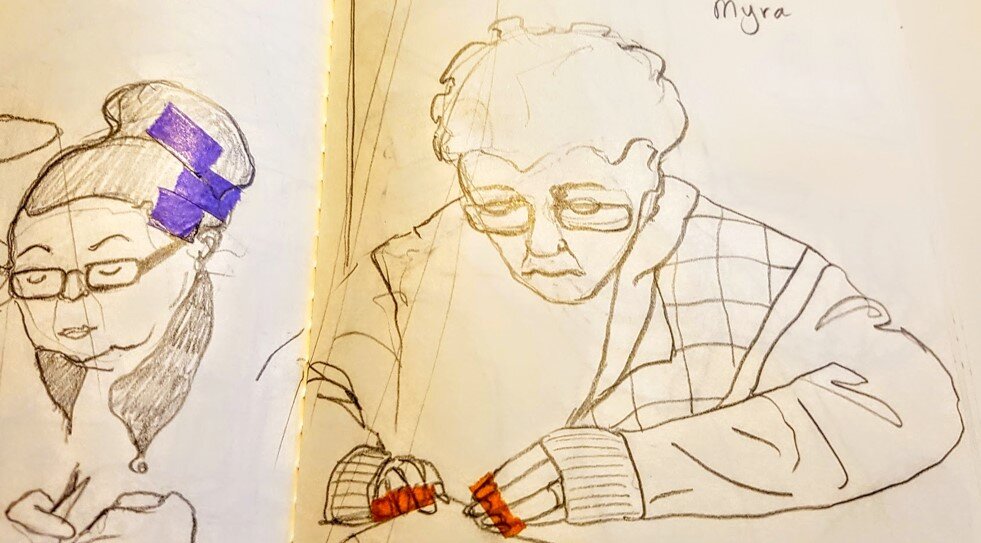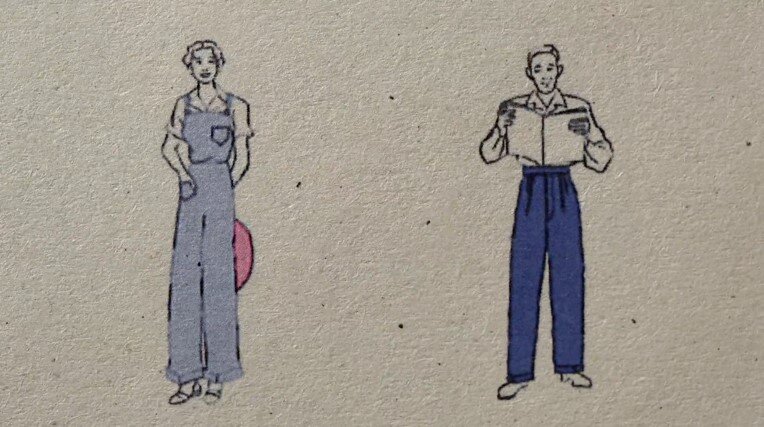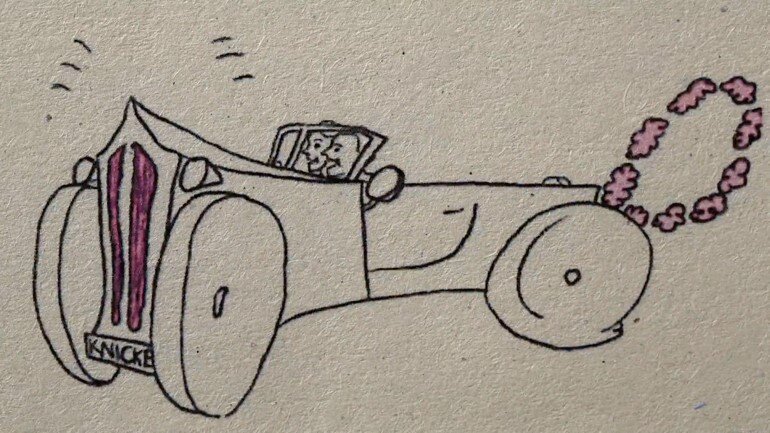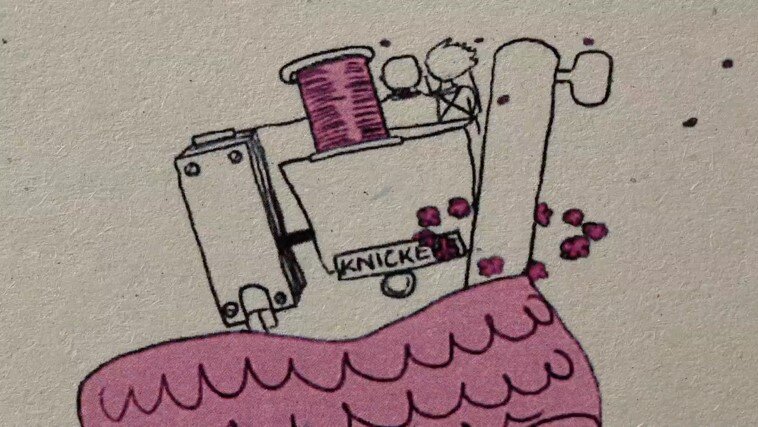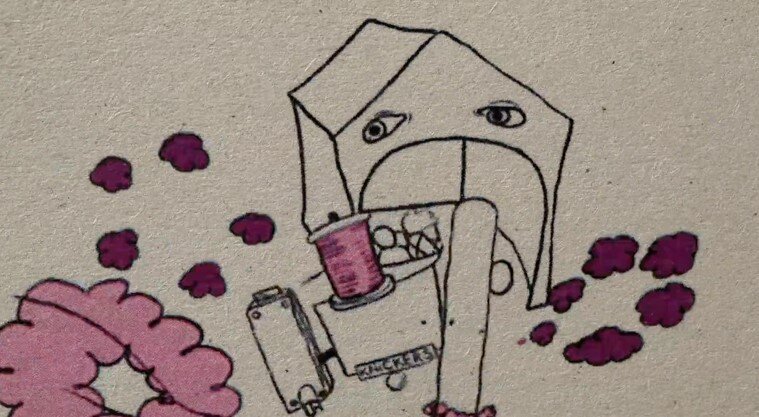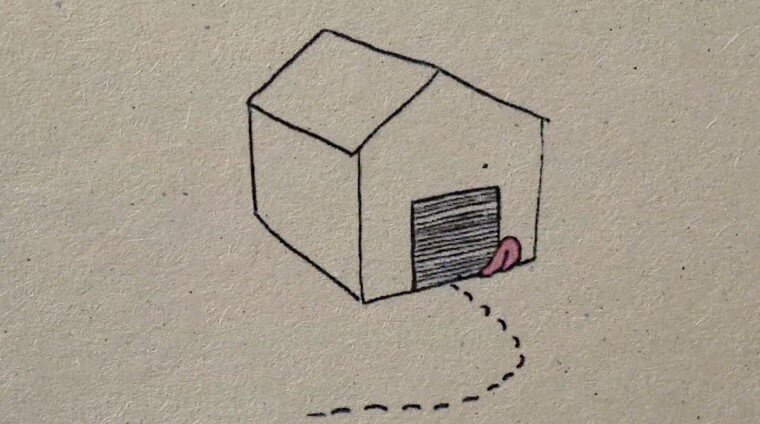Bloomers
Bloomers is an animated film that had an unlikely gestation. It started as a commission from a contemporary music orchestra in Vienna (Klangforum Wien) as a response to Christian Felber’s economic manifesto The Economy for the Common Good, a sustainable alternative to greed-based capitalism published in 2010. The manifesto is to change the ultimate goal of business solely from making money, to a meaningful, fulfilling and dignified life for all the participants. The orchestra had the idea to pair up 10 European female animation directors with 10 female contemporary music composers, and get them to contribute to an original orchestral piece which would reflect on the economic manifesto. The composition would then be performed live all over the world, plus the accompanying films would be part of an anthology feature film screened internationally (Fig. 1). Yet these films could also be promoted as stand-alone pieces, and thereby eligible for additional funding from their respective home countries. The film I ended up making (supported by the Arts Council England), along with composer Malin Bång and producer Abigail Addison, was Bloomers – a portrait of a knicker factory in Middleton, Manchester, UK. The film documents the ups and downs of the factory, since it was founded in 1935, in manufacturing lingerie for the UK market using local workers and materials. The same family has run it since its inception, so there was plenty of rich experience to draw from.
My work is generally documentary (for example, An Eyeful of Sound [2010], doubled up [2004], and Loop [2016]), and so during the production of Bloomers much of my time initially was spent in the factory, drawing the workers, and chatting to them about their backgrounds (Fig. 2). Hazel, who works in the factory office doing the accounts, has been involved with the factory since she was a child because it was her parents, Mary and Eric, who set up the factory when they were teenagers. One of the reasons I wanted to work with Headen & Quarmby (who market their lingerie under the name ‘Ella and me’) was because, right from the start, the ethos of Mary and Eric was so in tune with Felber’s ideals of dignity, sustainability, and parity. Hazel explained:
“…but as they started so young everyone gave them such a chance to make something of themselves, and they were very fair. It wasn’t a case of, ‘we want it at this price.’ It was more a case of ‘a little bit for you, and a little bit for us, and together we will make something of the company’” (Hazel, interview, 2018).
Bloomers was made by making hand drawn animation using the software TV Paint, and then exporting the frames as image sequences. I then hand printed onto different fabrics – eventually using over 60 metres of crepe de chine, silk and lace for the approx. 14,000 images. The final sequence of the film was actually printed onto full sized knickers, which the factory kindly manufactured for us, using each pair of knickers as an individual frame. The final step was then reshooting all the fabric to re-animate the movement under the camera (see the short ‘making of’ documentary below).
Bloomers - Behind the scenes documentary.
The film features sections set in the 1930s, when founders Mary and Eric built the business. This part of the film was printed out onto a very heavy, rough textured, sugar paper and then re filmed to give it a wobbly, printed, analogue feel (see production stills, left). The style of the animation mimicked the style of both vintage sewing patterns from the era (in the character design), as well as bouncy Fleischers-inspired animation (in the fantasy of its animation style, particularly the anthropomorphism of objects). The 1930s car that Mary and Eric drive off in metamorphoses into a sewing machine, leaving a trail of stitches behind them, and the factory becomes a jolly syncopated elastic construction, eating the sewing machine up with a big pink tongue and ejecting knickers into the air through its chimney as production starts.
Originally I animated the 1930s human characters with spaghetti limbs in line with a rubberhose style of animation (Fig. 3), but this seemed to take away from their believability as characters, and instead turned them into more comic contraptions. After watching lots of Betty Boop cartoons from the era, I realised that Betty always had a jointed skeleton (Fig. 4), whilst less sympathetic or more purely comedic characters had rubbery limbs, and so I changed them back.
Working with animated documentary alongside more overtly fantastical elements was really playful and liberating. As a student the reason I was attracted to animation, such as the work of Jan Švankmajer and Caroline Leaf, was for the way it seamlessly juxtaposed reality and fantasy. I was studying Angela Carter and Gabriel Garcia Marquez on my English literature degree and drawing parallels with the ways that reality and fantasy can mutually inform and comment upon each other, which seemed to be echoed in animation. Animation is such a plastic and malleable medium, it is wonderful to investigate all the potential for fantasy that it presents, even when working within the documentary genre. I am currently working on a new project about knitting and the brain, and have been investigating using folk tales and myth as a way of incorporating a fantastical element into that.
Bloomers will screen at Doc NYC at Cinepolis Chelsea on 11th November, Manchester Animation Festival at HOME cinema on 13th November, and London International Animation Festival at the Barbican on 3rd December 2019.
**Article published: November 8, 2019**
Biography
Sam Moore is an animated documentary maker who is passionate about the ability of animation to convey insights into tricky documentary topics. She has made work about competitive sweet pea growing, phantom limb syndrome, twins and multiple births, audio-visual synaesthesia, micro-biology, archaeological finds, and now the manufacturing of knickers. Sam’s films have won awards all over the world and she has a Ph.D. (2015) about the way animation can be used to document perceptual brain states, such as phantom limb syndrome and face blindness. Her artistic methodology is based on establishing strong symbiotic working collaborations with the people who are represented in her films, through visual contributions and aural recording. Samantha is a senior lecturer in animation at Manchester School of Art and a senior fellow of the UK Higher Education Academy. She guest lectures regularly both in the UK and abroad. www.samanthamoore.co.uk.

